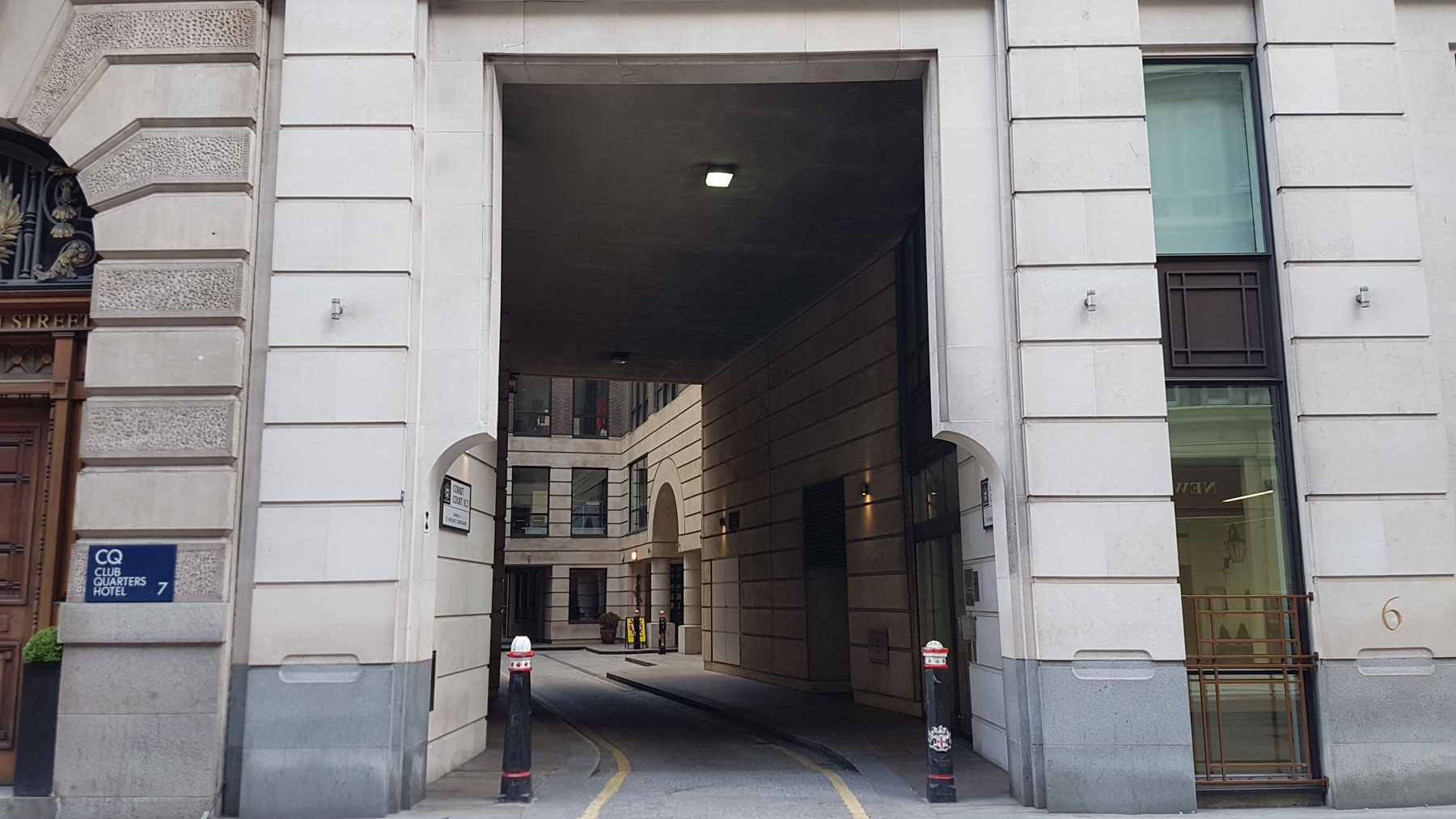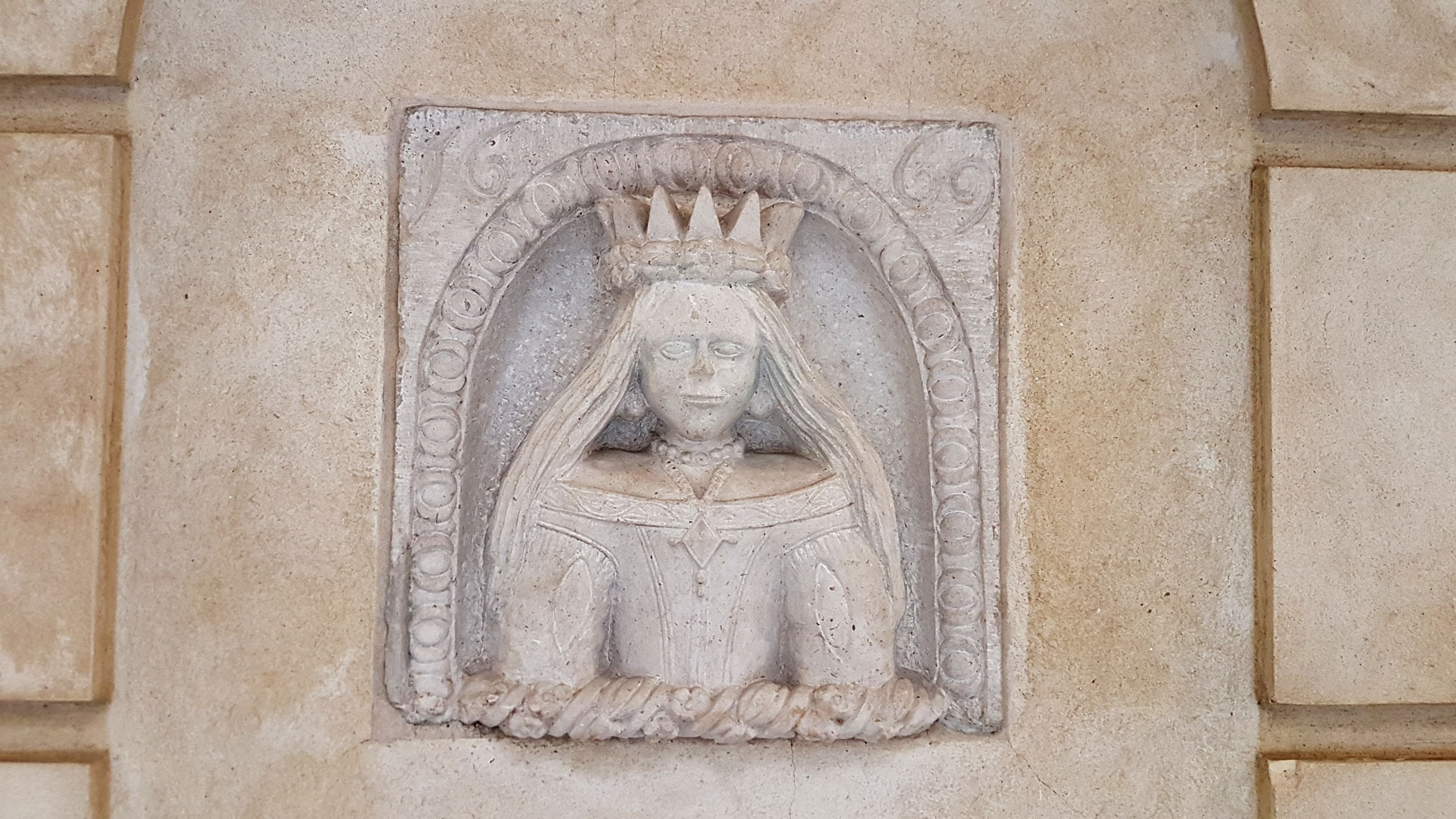An old alley with little charm in its modern incarnation — other than there’s a very important monument down here, the oldest Mercers Maiden known to exist, dating from 1669.
This alley has changed a fair bit over the centuries, but the heart of it, a courtyard has been there ever since it was created. It’s also lead a fairly uneventful life, busy, but never notorious.
Originally an alley lead off Bishopsgate (then Gratious Street) and was probably known as Offele Alley – giving a hint as to its original use. As the area developed and the open spaces behind the buildings slowly filled up, the short alley gained a large courtyard, and a spur leading on to the churchyard behind St Michael’s Cornhill.
The alley was blocked off at the western end sometime in the 17th century, turning it into a dead end.
It may have once also been known as Corbet’s Alley, but has certainly been Corbet’s Court since the mid 18th-century — the name originates from an early owner of the buildings on surrounding the courtyard.
The Tallis Views of London, made in the late 1830s shows the building above Corbet Court’s entrance as Henry Wayte, an “inventor and sole vendor of the Soupe de Galles, confectioner”.
Henry seems to have been less a confectioner, than a soup maker, and a prodigious one, regularly advertising that his soups — such as Mock Turtle, Mulligatawany, Mutton, Hare or plain Vegetable — are sold to the East India Company and the Royal Navy.
Although the alley was a dead-end right up to the 1960s, it gained an extension into the neighbouring St Peter’s Alley, and regained its short spur to the space behind St Michael’s Cornhill.
A very notable occupant can be found down here — the earliest known example of a Mercers Maiden — dating to 1669, so probably related to reconstruction just after the Great Fire of London. It was re-erected in Corbet Court in 2004 following redevelopment work. It was given offensive graffiti a few months ago, but a recent visit sees that was swiftly removed. Quite why people would attack a 350 year old sculpture like that is beyond rational understanding.
The other notable occupant of the court is Bangalore, a well regarded Indian restaurant.
Here a sloping path leads up to St Peter’s Alley, or you can take the steps up to the graveyard of St Michael’s Cornhill.










Corbett Court was given a new lease of life by the construction of 6 Gracechurch Street, a new building by Woods Bagot. It previously led only to the underground car park of the Seifert building once on the site, but now continues through to St Peter’s churchyard to the north and, to the west, leads to the churchyard of St Michael Cornhill.